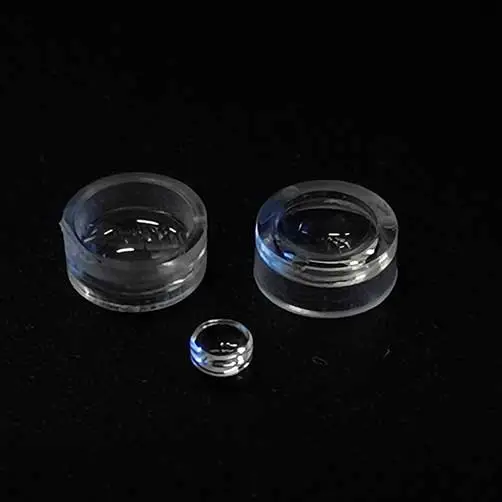
The band-pass filter is abbreviated as band-pass glass, which is a kind of glass with relatively narrow bandwidth and the obvious cut-off for short waves and longwave. Their spectral characteristics are represented by the maximum transmittance (TM) and its wavelength (λM) position, short-wave cut-off wavelength, long-wave cut-off wavelength, and half-width.
Which is a kind of filter that transmits light of a certain band and shields other light. The photosensitive range can include ultraviolet, visible light, and near-infrared wavelengths. According to the sensitivity range and lighting conditions of ordinary industrial cameras, commonly used machine vision filters generally include ultraviolet (UV), visible light, and near-infrared (NIR) wavelengths. According to the wavelength classification, it can be divided into the ultraviolet filter, visible light filter, near-infrared filter.
An optical band pass filter is an optical element that allows specific wavelengths of light to pass through while allowing other wavelength bands to reflect (or attenuate) light. Its working area can be ultraviolet light, visible light, near-infrared light, and far-infrared light, depending on your application range. Compared with general cut-off filters or color filters, its design and production are more difficult. The main reason is that the positions of both ends of the spectral peaks need to be relatively controlled.
Bandpass filters are made by adding special dyes to plastic or glass substrates or evaporating optical films on their surfaces to attenuate (absorb) certain light wavebands in light waves or pass light waves in a small range of precise selection. While reflecting (or absorbing) other undesired bands. Optical density filters, which measure the attenuation of light passing through a material, are often used in conjunction with bandpass filters to achieve the desired level of light control. By changing the structure of the filter and the optical parameters of the film, various spectral characteristics can be obtained, so that the filter can control, adjust and change the transmission, reflection, polarization, or phase state of the light wave.
In a transmitter, for example, the main function of a filter is to limit the output signal in order to allocate the bandwidth of the frequency band for transmission. This prevents interference from the transmitter to other base stations. In the receiver, a band-pass filter allows signals within a selected range of frequencies to be heard or decoded, while preventing signals from passing through unwanted frequencies. The bandpass filter also optimizes the receiver and sensitivity of the signal-to-noise ratio.



